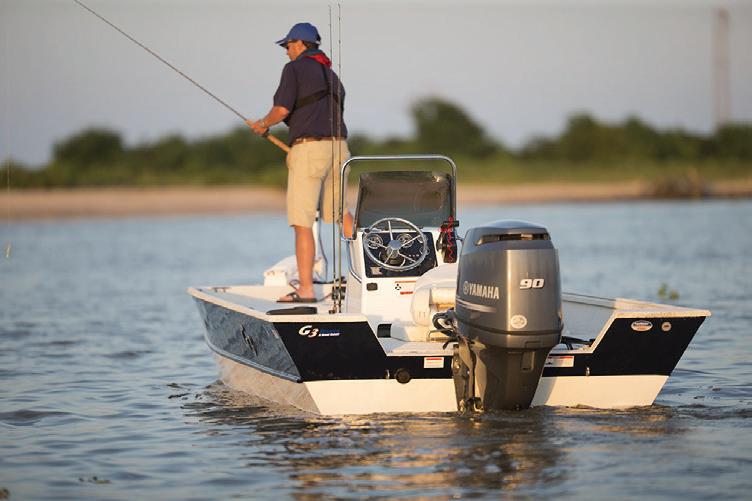
5 minute read
Around the Reef
By Adam Chulawat
Advertisement
If robots had Olympics, it would look a lot like the Gray’s Reef Southeast Regional Marine Advanced Technology Education (MATE) ROV Competition. Imagine working on something for an entire year and throwing it into a pool of water for 15 minutes. It might sound crazy, but it’s not. Student teams from all over Georgia and neighboring states are putting their hard work to the test in a contest that is anything but common!
The competition requires students to construct tethered underwater robots — called Remotely Operated Vehicles (ROVs) — from the ground up, and then requires them to perform tasks modeled after real-life scenarios in the ocean workplace. Teams composed of students in middle, junior and high school are able to choose from four different classes of competition that are defined by skill level, not age. The program demands excellence from well-rounded teams. In order to win, teams not only must build and successfully pilot an underwater robot, but also must create a hypothetical company to market and sell their ROV. Students prepare posters, product spec sheets, safety procedures, design abstracts and sometimes even business cards to present to working professionals who serve as contest judges.
Gray’s Reef staff have hosted the event for the past 15 years and are now passing the torch to the charitable nonprofit foundation that supports the work of the sanctuary. Gray’s Reef National Marine Sanctuary Foundation was founded in 2014 and is chaired by Cathy Sakas, who is well known in Savannah as a naturalist and biologist. Luke Roberson serves as the foundation’s regional event coordinator and is working on building props for the student ROV pilots to use at this year’s competition. Roberson understands and emphasizes the importance of the competition in relation to Gray’s Reef. “We want to show them the value of Gray’s Reef and the importance of protecting it and seeing how the intersection of technology and the environment can really work together in research and development.”
Worldwide, the competition’s hypothetical “missions” are created by the MATE Center in California. This year’s mission focuses on the role ROVs can play inshore within rivers, lakes and dams in Eastern Tennessee. Each team must meet three challenges. The first is to simulate inspecting a dam that has been structurally damaged. The dam has suffered multiple cracks due to sinkholes formed by limestone, and the ROV must be carefully piloted to identify, count, and map the problem areas. Next, the teams must help maintain healthy waterways by simulating a water-quality testing scenario.
“The students have to fly their ROVs down and collect water samples, and then actually bring the samples to the surface for pH, phosphate, oxygen and other testing,” Roberson says. Finally, competitors’ ROVs lift simulated cannons to the surface for inspection. That challenge comes from real researchers finding old Civil War cannons in the rivers of Eastern Tennessee!
The student design engineers must create a robot that is strong enough to lift a cannon, but gentle and agile enough to inspect cracks and take water samples. Brains and brawn are required for total success! Each of the tasks has specific regulations, too. “There’s a lot of rules,” Roberson adds with a grin. Gray’s Reef sanctuary staff and volunteers also play a substantial role in the competition. “They provide a lot of infrastructure and guidance for us,” Roberson says. “You’ve had people who have designed and built ROVs here at the sanctuary. We’ll also have divers from the sanctuary at the competition, resetting mission stations.”
Students completing the challenges also will gain great experience at selling their ideas. “It’s not only engineering [skills], the students have to market their ideas and view themselves as entrepreneurs,” Roberson says. “They not only have to look at the challenges, look at engineering
An ROV as it floats in the pool arena waiting for a challenge. Photo provided by GRNMS

ROVs appear to be simple but are carefully and strategically crafted for specific tasks. Photo provided by GRNMS
solutions, but they also have to market their solutions as if they were going to pitch a government contractor or a corporation. It’s one thing to engineer and design things, but it’s a whole other thing to sell yourself. They’re not only going into a job market with the skills to solve the problem, but they can also talk to people about how they solve the problem.”
Roberson says the goal of the competition is to “instill respect and value for the environment. That’s something they can take with them no matter where they go.” The Gray’s Reef Southeast Regional MATE ROV Competition is an experience that can help students pursue goals in advancing marine technology, and in turn support the health of our beautiful ocean planet.
For more information, email:
michelle.riley@noaa.gov or call (912) 598-2345


Oysters • Drink specials • Great menu items
Live bait Dockage Dry Storage
Fish Tales 727.3473 • Ft. McAllister Marina 727.2632 3203 Ft. McAllister Road • Richmond Hill, GA • SM 605
I’ve fetched this GREAT motor for you!
Get out on the water with one of our Mercury Re-powers!
2604 Causton Bluff Road • Savannah, GA (912) 376-8776 • HaleMarineInc@gmail.com


Satilla Marine
Family Owned and Operated Since 1977



Parts and Service - Boats - Trailers - Outboards Accessories - Boat Gear - Rods - Reels - Tackle Serving all of coastal and south Georgia for your shing and boating needs! 1807 Old Reynolds Street • Waycross, GA • (912) 285•8115 • sales@satillamarine.com









